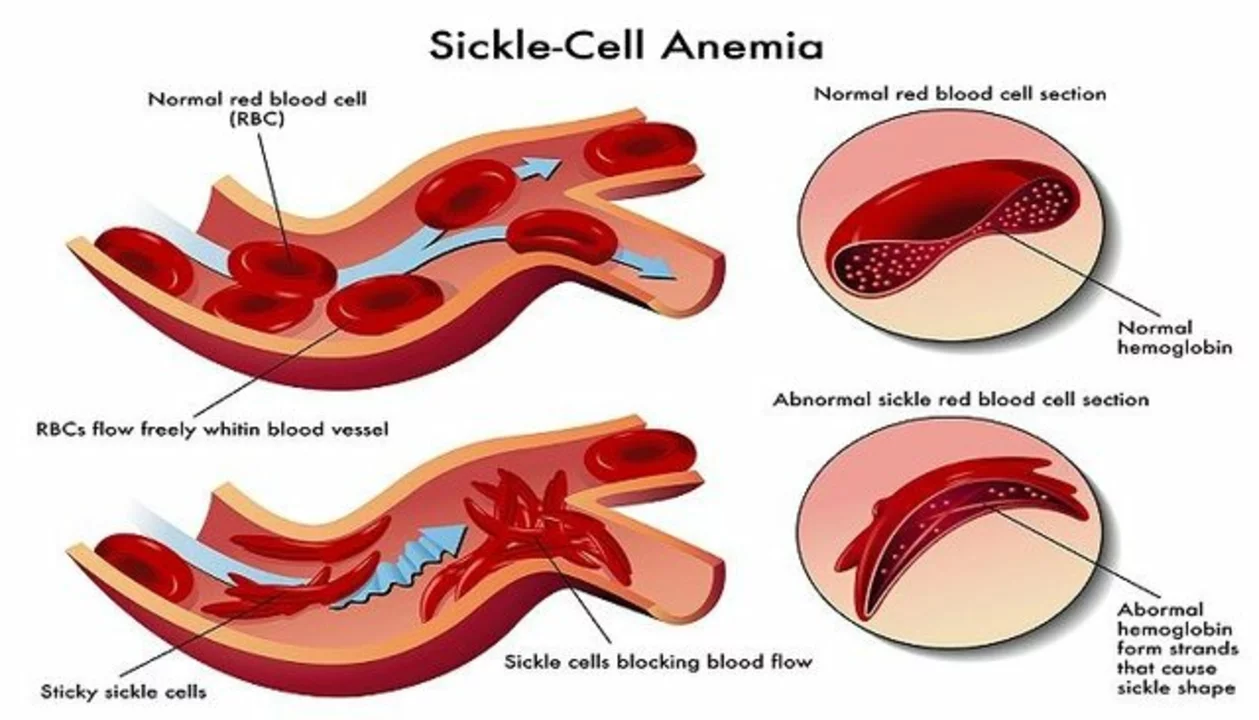As a blogger, I've recently been researching the connection between pneumonia and sickle cell disease. It turns out that individuals with sickle cell disease are at a higher risk for developing pneumonia due to their impaired immune system. To reduce the risk of this potentially life-threatening infection, it's essential to stay up-to-date with vaccinations, maintain good hygiene practices, and seek prompt medical attention for any respiratory symptoms. By staying vigilant and proactive, we can protect ourselves and our loved ones from the dangerous combination of pneumonia and sickle cell disease. Stay safe, and always prioritize your health!
Sickle Cell Disease: What You Need to Know Right Now
Sickle cell disease (SCD) is a genetic blood disorder that changes red blood cells into a rigid, sickle shape. Those misshapen cells block blood flow, causing pain crises, organ stress, and a higher infection risk. About 100,000 people in the U.S. and millions worldwide live with SCD, so this isn’t rare for many families.
Knowing the basics helps you act fast when things get serious and manage the everyday stuff without feeling overwhelmed. Below are clear, practical steps—no medical fluff.
Common signs and everyday management
Pain crises are the most common problem. They can start suddenly and feel like deep, intense aches in the chest, back, arms, or legs. Other frequent issues: ongoing anemia (tiredness, pale skin), frequent infections, slow healing, and jaundice. Children also face growth delays and repeated illnesses.
Daily management goals: prevent crises, reduce infections, and protect organs. Key habits that help right away:
- Stay hydrated—drink water regularly; dehydration triggers crises.
- Avoid extreme temperatures and sudden altitude changes when possible.
- Keep up with vaccines and regular checkups—pneumonia and flu shots are vital.
- Use prescribed medicines like hydroxyurea as directed; it reduces pain episodes and hospital visits.
- Plan for pain control: have prescriptions, heat packs, and a step-by-step plan with your doctor.
Treatments, emergencies, and new options
Standard treatments include hydroxyurea, blood transfusions, and antibiotics for infections. For severe cases, bone marrow (stem cell) transplant can offer a cure, but it needs a matched donor and has risks. Gene therapies, including CRISPR-based approaches, are expanding fast and show promise in trials, though access and cost remain issues today.
Know the red flags that require immediate care: any fever above 38.5°C (101.3°F) in a child with SCD, sudden chest pain or shortness of breath (possible acute chest syndrome), signs of stroke (sudden weakness, trouble speaking, severe headache), or severe, unrelenting pain that doesn’t respond to usual meds. Priapism (painful, prolonged erections) is an emergency too.
Talk to a hematologist who knows SCD. Ask for a written emergency plan and make sure family, schools, or caregivers have it. If you travel, carry a summary of your medical history, current meds, and an emergency contact.
For trusted info and support, check resources like the CDC and the Sickle Cell Disease Association of America. Connect with local hematology clinics and patient groups—real-life tips from people living with SCD can make daily life easier.
If you or a loved one has SCD and something feels different or worse than usual, don’t wait—call your care team or go to the ER. Quick action often prevents bigger problems.

